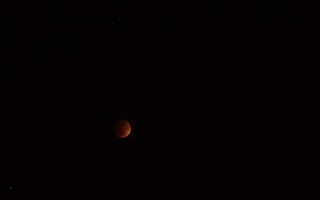Recently Erica has become very interested in all things astronomy. We took her to the library and picked up Charlie Brown’s Encyclopedia of Earth and Space – it’s a pretty large book filled with the state of the art science from 1978 (when it was published 😉 ) about space. For the last several weeks she’s been informing me of all kinds of things she learned from the book – that it’s too hot on Mercury to live there. That Neptune was the first planet to be discovered by looking at how other things in space moved rather than just by seeing it in a telescope. That the rings of Jupiter are actually collections of really small rocks. She’s read the whole book (around 150 pages or so) several times all by herself – and she frequently reads me some of the Peanuts comic strips that are sprinkled in the book.
I’m not exactly an astronomy beginner (though I’m close…) I was in my high school astronomy club. I have built a 10″ newtonian reflector telescope – even ground the mirror by hand. I remember seeing Halley’s comet in person last time it was here. I’ve observed some beautiful and amazing things in space. However, my daughter’s working knowledge of the solar system and stuff in outerspace is quickly outpacing my own.
She’s 5.
I’m really in for it when she becomes a teenager.
So, tonight there was a full lunar eclipse, and given her recent interest in all things astronomical, I thought it would be fun to observe it with her. Turns out that the timing could not have been much better, either.
The moon rose just after 6 pm tonight (just as it was getting dark) and began to eclipse about 6:45 or so. It became a full eclipse at 8:01 and lasted nearly an hour until about 8:50 or so. It then went back to being a partial eclipse for about 45 minutes to an hour or so and then returned to being a full moon.
Starting just before 7 pm every few minutes we would run outside to see how much the moon had changed since the last time we saw it. I was amazed at just how fast the shadow seemed to creep across the moon. Erica was amazed at how hard it would be to throw a rock high enough to reach the moon (she tried). We were both amazed by the stray dog that ran into our house while we were out in the front yard, but that’s another story.
I borrowed a decent camera from my brother (I just have a little point and shoot digital, he’s got something from a real camera company with detachable lenses and more buttons than mission control) and snagged a tripod as I knew my exposure times would need to be long. As Erica ran around in the front yard and generally tried hard to avoid her bedtime, I took the following picture:

Neat, eh?
Ok, not all that impressive in this small format, but here’s a link to a higher resolution version of it.
The fuzziness is mostly due to the cloud cover we had, but could also been due to poor focus on my part with the camera.
This was taken around 8:35 or so, just after the middle of the full eclipse. The sun would not directly hit the moon for another 20 or 25 minutes.
One thing to note for anyone unfamiliar with how a lunar eclipse works: The moon does not go completely black. The reason is that even though the earth is completely obscuring the sun from the moon, as the light from the sun hits the edges of the earth and passes through our atmosphere, it bends enough to hit the moon. The following illustration of how an eclipse works helps to visualize it.

Credit: http://en.wikipedia.org/wiki/Image:Lunar_Eclipse.svg
Leave a Reply